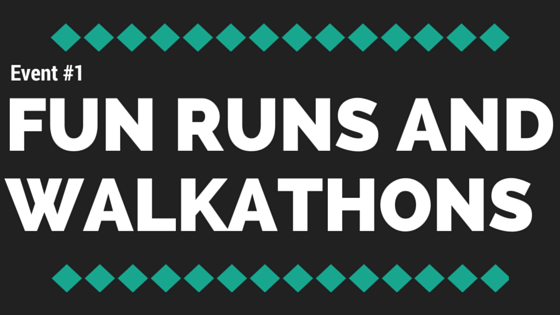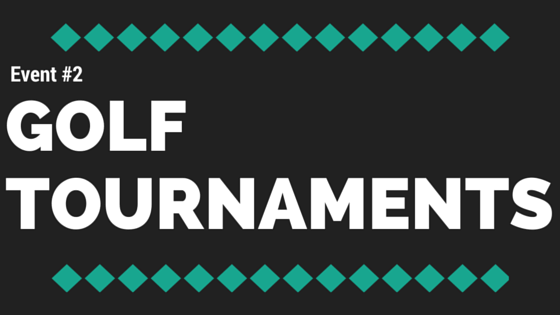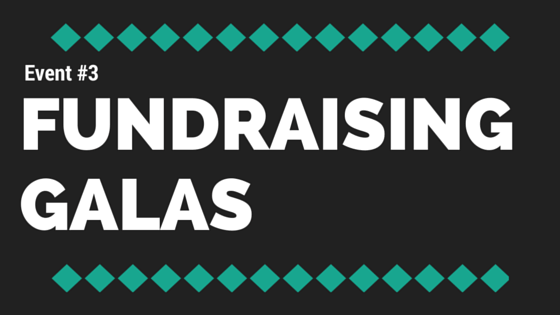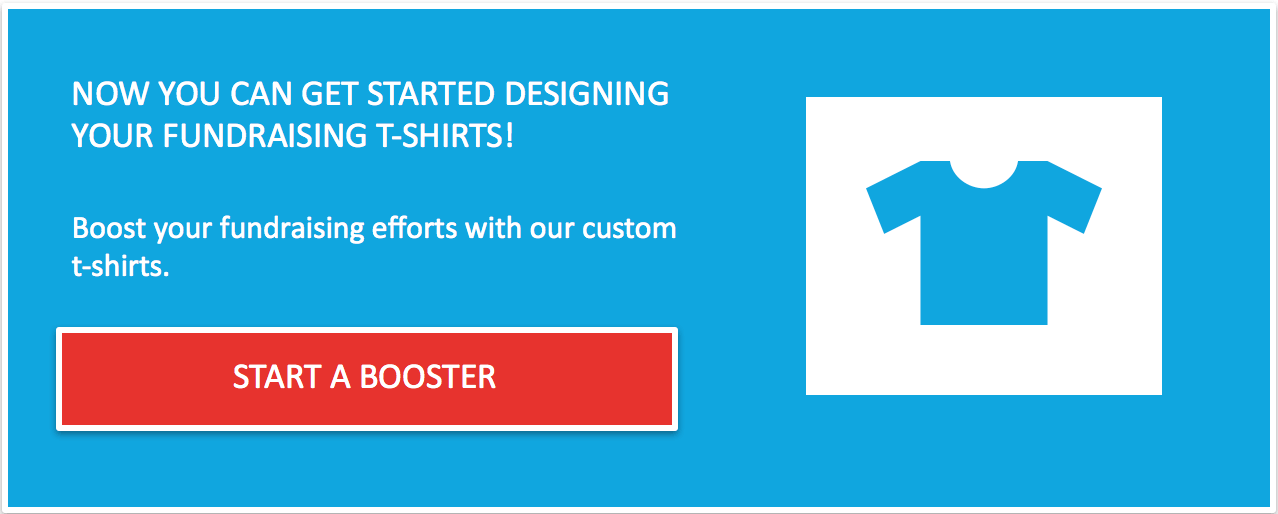Identifying Major Donors Across Annual Fundraising Events
Annual fundraising events are something that your community, and major donors, looks forward to.
They’re fun and fulfilling; they offer attendees a chance to come together while feeling good about where their funds are going.
Whether you’ve paired your event with a current campaign, like your capital campaign, or are hosting the event as a standalone, it’s an opportunity to make major headway with your cause.
To do so, you’ve set your committees, you’ve rounded up your volunteers, and you’ve gathered your sponsors. Review your Booster Essential Event Checklist one last time. Are you ready to go? That depends.
Have you identified your major donors?
When looking for major gift donors (for events or otherwise), you’ll need to look at:
- Past giving to your organization: Previous donations are the best indication of future donations. Try to look for patterns or changes in gift amounts.
- Previous donations to other nonprofits: It helps if a prospect has given to organizations that share similar missions to yours, but it’s not a necessity. Philanthropic giving in general is an indication of willingness to make a larger donation in the future.
- Political giving: Political giving shows that a donor is willing to contribute to a cause that they feel passionately about. If the party or candidate that they donate to shares stances that your nonprofit takes, that’s even better!
- Volunteer involvement: People who regularly volunteer with your nonprofit or other charities demonstrate a desire to help others in a tangible way. When paired with giving history, volunteer involvement can be a great indicator of major gift capacity.
Major donors can make a huge impact on your nonprofit’s efforts. Your annual events are the perfect chance to entice new donors and remind your old donors why they wanted to donate in the first place.
Remember the purpose of your event: to further support your nonprofit’s cause. And what better way to accomplish your goal than by receiving an outstanding donation from a major donor?
When it comes to annual events, there is a plethora of options available to you, But for the purposes of this article, we’re going to hone in on three of the most popular mainstays:
Each will have specific advantages that you can use to identify major donors, so we’re going to address the events one at a time.
Fun Runs and Walkathons
Walkathons and fun runs are the perfect events to get everybody moving — toward the finish line and toward your nonprofit’s goal!
A walkathon is a long-distance walk along a predetermined course, while a fun run is just that – a run.
Fun runs can be 5k to 10k races, or races with a certain theme. Color runs and zombie runs are just the tip of the themed iceberg. Themes may add more dimension or attract a different kind of audience to your event, so be mindful of the image that you’re projecting.
The most important thing to keep in mind is that you want to pair your event with a specific cause.
Tell participants exactly what their money is going toward. Make it tangible.
If your nonprofit supports animal shelters, put the fun run funds (try saying that three times fast!) toward new kennels or an outdoor space. Then, allow your participants to visually band around your cause by creating fundraising t-shirts unique to the event.
Display your nonprofit’s name or logo prominently on the shirt. Your shirts will not only rile up community spirit in your participants, but will showcase your nonprofit to anyone who sees your event participants.
Fun runs and walkathons should be open to all, but you can still reward the fastest participants with prizes. Be sure to keep track of your participants’ times. Participants who can see how much they’ve accomplished may feel more gracious toward your nonprofit for hosting the event.
Now that you have an understanding of fun runs and walkathons, pay attention to these three important strategies when it comes to identifying major donors:
- Perform prospect research before the event.
- Bring in a guest speaker to inspire your donors.
- Research walkathon and fun run donors.
Now let’s break down these points to tap into that major donor magic.
Perform prospect research before the event.
Because these events tend to draw big crowds, you won’t be able to speak with every person face to face. You’ll need to narrow down your efforts to your most likely contenders for major donors.
Effective prospect research can help you target major donor candidates to make the most of the time you have.
Essentially, prospect research is the process of analyzing, identifying, and cultivating donors based upon their ability and affinity to donate to your organization.
Prospect research can help you identify your most promising donors by considering factors such as past giving and property ownership. Once you’ve gained information about your donors, you can then use it to craft asks based upon their giving capacity and demonstrated philanthropic interests.
Furthermore, prospect research can give you a clearer picture of your donors as a whole, allowing your frontline fundraisers to better connect with each potential donor.
You may want to consider a prospect screening of your registered attendees, and in this case, preparation and planning will be your greatest allies.
Prospect research can be handled in two different ways: the DIY approach or hiring a prospect research consultant.
If your nonprofit has the resources, you can hire on a full-time researcher to analyze your donor’s data create reports based on the information. The benefit of completing your research in-house is that your researcher will have a strong understanding of your nonprofit’s goals and how the information can be used.
On the other hand, if your nonprofit has a smaller staff or you would just prefer to hire someone for a single project, a fundraising consultant is your best choice. When you work with consultants that specialize in prospect research, they’ll know what to look for, and they can help you develop a plan of action based on the results.
To prepare for prospect research, follow these steps:
- Set up your registration page. By making registration open and available as soon as possible, more people will be able to register in advance.
- Entice early registration. Encourage registration before the event by offering a promotional item, such as a water bottle or t-shirt.
- Spread the word. Start spreading the word early, and email your current donors and volunteers about the event at least 5 weeks in advance.
- Perform prospect research. Now that you have a list of attendees, it’s time to research your prospects. Act on the information that you gain by targeting your top candidates during the event.
By following these steps, you’ll prepare yourself for prospect research success!
Bring in a guest speaker to inspire your donors.
Ask a major donor or strong supporter to give a speech before or after the race. A speech can be used to both thank participants and inspire donors. It can put giving at the forefront of your attendees’ minds, causing major donors in the crowd to surface.
To best inspire and persuade your attendees to donate, your speaker should emphasize these characteristics:
- Community. Ensure your speaker is recognizable to the community. Your attendees will be more willing to listen to a trusted figure, and as a result, they’ll be more willing to donate.
- Relatability. Your speaker should emphasize their personal connection with your charity, and they should tell a story that illustrates how meaningful your charity has been to them individually and to the community as a whole.
- Value. Your speaker needs to emphasize why donating to your nonprofit is the best option. They should be as specific as possible, referencing past results or showing the impact of your organization with tangible facts.
Be sure that your speaker addresses the specific cause that the event fundraising will support and explains clearly how donors can contribute.
Research walkathon and fun run donors.
Before your event, it’s important that you encourage runners and walkers to peer-to-peer (P2P) fundraise and give them the necessary tools to do so.
This type of fundraising is also known as crowdfunding or social funding. It’s driven by your fundraisers and volunteers, who individually fundraise within their own circle of peers.
P2P fundraising takes valuable traits from individual and group fundraising and combines them. Your volunteers are part of a team, but they each have a goal to meet and weight to carry.
Integrating P2P fundraising into your overall fundraising strategy can help you reap the rewards of these donations and point your nonprofit toward major donors.
Here’s how P2P fundraising can be used to identify major donors:
1.Motivate with Personal Goals
What to do: Provide an individual fundraising goal that each volunteer should strive to achieve. Consider offering a leaderboard or prizes for the top fundraisers.
How you can identify major donors: Personal goals fuel the competitive spirit. As each fundraiser strives to raise the most money, they’ll reach out to their own networks and solicit major donors in their personal lives. Major supporters will be more inclined to donate if they’re being asked by someone they already know.
2. Inspire with Overall Goals
What to do: An overall goal is the total fundraising revenue that you want to receive for the race. Create a visual marker (commonly called a fundraising thermometer) so that your fundraisers can track their overall progress while donors visualize how much your nonprofit still needs.
How you can identify major donors: Group goals foster teamwork. Major donors may surface when they see that their contributions are part of a larger group effort. Your fundraising page can list top donations and give donors the opportunity to write comments that may inspire others.
3. Gear Up Excitement
What to do: P2P fundraising generates awareness and excitement about the race before it starts. Emphasize that donating is a way to participate in the event without having to run in the race itself. Pairing your P2P fundraising with products, such as t-shirts, can further encourage donations and support from bystanders.
How you can identify major donors: Major donors who are unable to race can support their peers by giving. Anticipation for the race can also draw larger crowds with major donors among them, and major gift contributors are more likely to donate to an event with a lot of promise and energy.
4. Social Media Advantage
What to do: Encourage your fundraisers to promote on social media to reach a large base of potential donors. Make sure that they have the right tech tools, such as a personal fundraising page feature and access to mobile giving. Keep track of the donor data as it arrives.
How you can identify major donors: Social media profiles offer plenty of valuable information, including a major donor’s connections and interests. Check the accounts of major donors that you already have and see if there are any networks you can leverage to solicit a donation. If a new donor makes a noteworthy — but not major — donation, use your online platform to investigate their major donor potential.
Remember to organize the data that you’ve gathered.
Fun runs and walkathons can be extremely rewarding, fun, and profitable for your organization. Keep your focus on charity and your fundraisers will follow suit. Major donors are in the crowds; use the tools you’ve at your disposal to find them.
Golf Tournaments
Golf tournaments can keep your nonprofit’s fundraising up to par.
Like fun runs and walkathons, golf tournaments should be paired with a specific goal that your nonprofit is trying to achieve.
However, golf tournaments are more upscale and exclusive than fun runs and walkathons. You’re less likely to be picking major donors out of a large crowd, but you still want to allot your time wisely toward your most likely prospects.
In a golf tournament, you’ll divide your attendees into separate teams, and they’ll each play through a designated course.
You may want to offer different tiers of competition, such as beginner, intermediate, and expert level teams.
Most of the work you’ll do to identify major donors will take place before and after the golfing itself.
These three steps will help you to identify your major donors:
- Plan a post-tournament auction.
- Learn about the players’ professional lives.
- Promote your major giving program in person.
By spending just as much time on the aftermath as on the tournament itself, you can turn your fun golfing event into a tool to find your major gift contributors.
Plan a post-tournament auction.
Golf tournaments are often paired with a closing meal and charity auction. Charity auctions provide the opportunity for your players to donate more than the entry cost, all while receiving desirable items and packages.
The key to letting major donors come to you is tempting them with an enticing auction.
After all, if your items are valuable, major donors will likely reveal themselves in the bidding. Once they showcase their wealth, and since they already have a connection with your nonprofit through the tournament itself, you can pursue them as major donors.
Be sure to consider:
1. What type of auction to have. You can choose to hold a silent or live auction, depending on the mood that you’d like to set.
- A silent auction has a more casual, relaxed atmosphere.
- A live auction can stir up excitement from the crowd.
- A hybrid auction, uses a live auction for your biggest items while letting your attendees relax during the silent component.
Major donors will respond differently to each auction type. A live auction may foster friendly competition, encouraging major donors to outbid each other. A silent auction may be more appropriate after a long tournament when attendees are tired.
2. What kind of items to auction. Establish universally appealing items. Depending on your funding and sponsors, you’ll want to create the best choices possible for your guests. Prizes like VIP tickets and vacation packages are big ticket-items that will draw out major donors.
Major donors will save their bids for the best items. Make sure you have enough big items to attract multiple major donors. Often, if a donor is outbid on one item, they’ll want to try for another.
3. How to run your auction. To persuade major donors to reveal themselves, you’ll want to ensure that things run smoothly.
- Bring in a professional auctioneer for a live auction.
- Nicely package items so that they’re visually appealing.
- Include a card thanking the item donor for each item to bring giving to the forefront of the participants’ minds.
Major donors will respond to professionalism. Smoothly incorporating giving into the auction will assure donors that their money is going to an organized, well-run nonprofit. Highlighting giving will remind major donors that the auction is about charity.
For more information on running a charity auction, check out Bidpal’s charity auction guide.
Learn about the players’ professional lives.
When you host your golf tournament, you’ll provide the companies that sponsor your event with a corresponding number of player spots to fill.
The companies will fill these slots with their own employees, giving you insight into each attendee’s business affiliations.
You can use this information to your advantage.
If you know someone’s job title, you can reasonably estimate their salary, which may be helpful in identifying giving capacity.
But beyond the basics, understanding business affiliations will help you better understand your potential major donors.
Work is an important factor in your donors’ lives, and connecting to their livelihood can help your nonprofit cultivate a meaningful relationship that reflects your donors’ interests.
For example, a person who’s passionate about their work in a specific industry may be more inclined to give to fundraising efforts that they can support through their business (i.e. the CEO of a food packaging company might be persuaded to donate to a campaign to end hunger).
Further, you can leverage someone’s network to persuade them to donate.
Companies that participate in your tournament are already demonstrating an interest in charity and a desire to work with nonprofits. It is likely that their employees want to follow suit.
Business affiliations are a major factor in gaining a holistic understanding of a potential donor, and knowing donors’ professional relationships can help you approach them when it comes time to make your ask.
Promote your major giving program in person.
Once the tournament is over, you’ll have the chance to mingle with likely donors.
If you have a major donor society, now is the time to showcase it. Emphasize its impact on your nonprofit and all the good that major donors have done for you.
You can plan to speak to the audience as a whole. Frame your speech around an awards ceremony for the top putters, and recognize the major donors that you already have.
Be sure to:
- Thank your golfers for their participation and involvement.
- Provide them with a clear call-to-action.
- Explain how to donate to your nonprofit if they want to.
- Give out your contact information for follow-up inquiries.
You can also promote major donations through information in parting gifts.
Parting gifts are a means of engaging your donors while promoting your nonprofit to their extended networks. T-shirts, for example, can advertise your nonprofit long after the golf tournament is over. Anyone from family members to strangers on the street can gain awareness about your nonprofit from a well-designed shirt.
Be sure to center the design around the golf tournament itself so that donors are reminded of the event and their personal involvement in your nonprofit every time they wear their shirts.
Additionally, place luggage tags with your nonprofit’s name and donation information on each parting gift as a reminder. Be creative, and check out these product fundraising ideas to create the best parting gifts for your tournament.
But remember that parting gifts are only a small part of your interaction with your donors. Above all, prioritize in-person conversations and persuasion.
These conversations allow you to not only demonstrate the impact major giving has on your ability to accomplish your mission but to answer any questions or concerns that potential major donors may have.
Golf tournaments are perfect events to gather new contacts and persuade major donors. Use the information and networks of your attendees to best strategize for marketing your major gifts program.
Fundraising Galas
Galas are upscale events that you can market specifically to major donors.
Galas usually have a dress code and lean toward a wealthier crowd.
Keep in mind that your volunteers may still dress casually. You may even want them to wear t-shirts that show support for the gala’s specific cause (just as with fun runs and golf tournaments, you’ll need to clearly explain how the gala funds will be used). T-shirts will double as identifiers so that guests can direct their questions toward your volunteers.
The dress code contrast will remind attendees that your gala is more than a fancy event, and that it is, at its heart, a means of generating support for a charitable cause.
Focusing on charity will help your attendees see why donating to your cause is a wise financial and philanthropic decision.
In addition to ensuring that your gala runs smoothly, you’ll want to take preemptive steps to identify major donors, such as:
- Research real estate ownership.
- Connect with donors before the event.
- Prepare a plan of action for major gift officers.
Research real estate ownership.
It’s no secret that galas are on the fancier end of the fundraising spectrum. Due to that, galas tend to draw a crowd that’s ready and able to contribute major gifts.
Real estate ownership is a key indicator of major donors and can be used as an anchor to focus your research efforts. Though real estate ownership should be a part of your overall prospect research, you’ll want to pay special attention because it can indicate statistical inclinations for giving among your gala attendees.
After all, those who own $2 million or more in real estate are much more likely to donate than the average person. How much more likely? 17 times.
To research real estate ownership, use your attendees’ addresses to estimate their property values.
You can use free sites such as Zillow to find out property values. This step will take some guesswork; it would be difficult to find out exactly how much each guest owns in real estate without more information.
You might, for instance, only have one address for a prospect, but that same prospect could own 5 properties.
However, a preliminary check on property values will help narrow down your focus to attendees with a high probability of becoming major donors.
Connect with donors before the event.
Once you know who’s attending your gala, you’ll want to connect with your most likely donors before the event.
Begin by leveraging the networks that you already have to make early connections with your attendees. Doing so will help you to target potential donors with the right major donor strategies.
You can, for example, use the connections across your:
- Gala committee.
- Board members.
- And major donors.
These connections should help to indicate which potential major donors have philanthropic interests and inclinations. After all, the people in your potential donors’ networks will know them best.
A track record in philanthropy is not only your strongest indicator of a future donor, but a means of relating to your donors.
Once you’ve identified major donors across your nonprofit’s networks, connect before the gala by leveraging the information that you have. If possible, delegate each potential major donor to the person involved in your nonprofit who knows the potential donor best.
However, in general, effective points of contact can be:
- Involvement in other nonprofits. RSVPs who are already involved in nonprofit work have demonstrated their interest in your field. Explaining how their philanthropic interests relate to your nonprofit’s work can show them how your nonprofit fits into their charitable goals.
- Past donations. Past donations, to your nonprofit or to other nonprofits, are the strongest signifiers of future donations. You can make initial contact by thanking previous donors for their past contributions to your nonprofit or to charity in general.
Establishing a connection with your RSVP’s before they even set foot in your event will help introduce potential donors to your fundraising efforts organically.
By the time they arrive, they’ll already have an idea of how their donations could help, and you’ll have a greater sense of who they are and how they can best fit in with your nonprofit.
Prepare a plan of action for major gift officers.
Galas, more so than other events, are about interaction. Now is the chance to send in your frontline fundraisers to really put giving in the front of everyone’s mind.
Your major gift officers are likely ready to implement the information that they’ve learned about your prospects; be sure to back up their efforts with careful planning.
Use the information you have to create strategic seating charts if seating is assigned, placing major gift officers alongside potential major donors.
If seating is not assigned, pinpoint your top contenders and assign a major gift officer to each one.
Allow your fundraisers to assess each candidate’s likelihood for major giving.
Be sure to follow-up with thank you notes and contact materials that encourage future giving.
Since galas are upscale events, they tend to draw likely major gifts prospects. Make the most of your time with these attendees by researching your guests ahead of time and allocate your resources accordingly.
Now that you know the best strategies for tackling these common fundraising events, you can use them to identify major donors.
Major donors are vital contributors to any nonprofit, and events are a great way to rally up excitement for your cause. By using events and major donors in tandem, you can push your cause forward, faster!





Leave a Comment